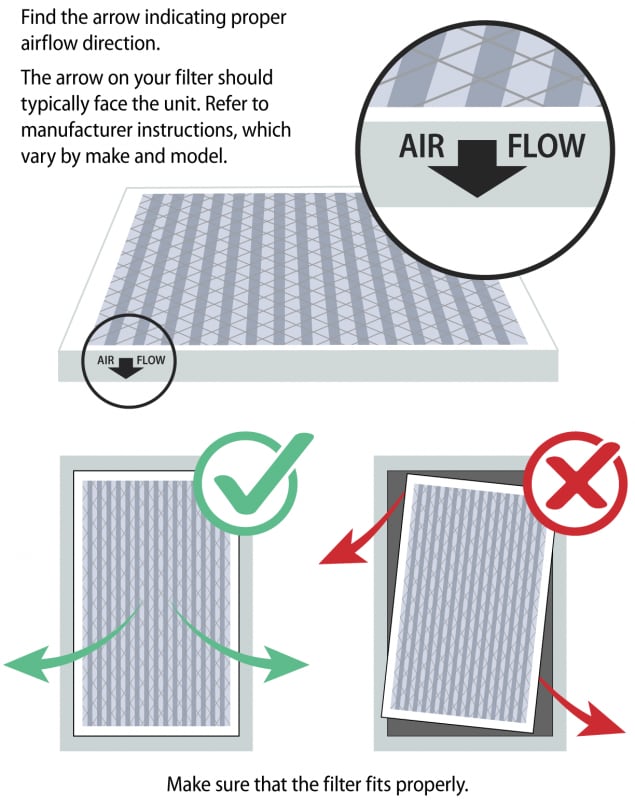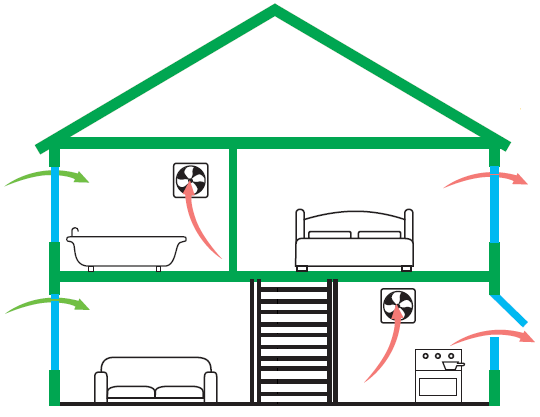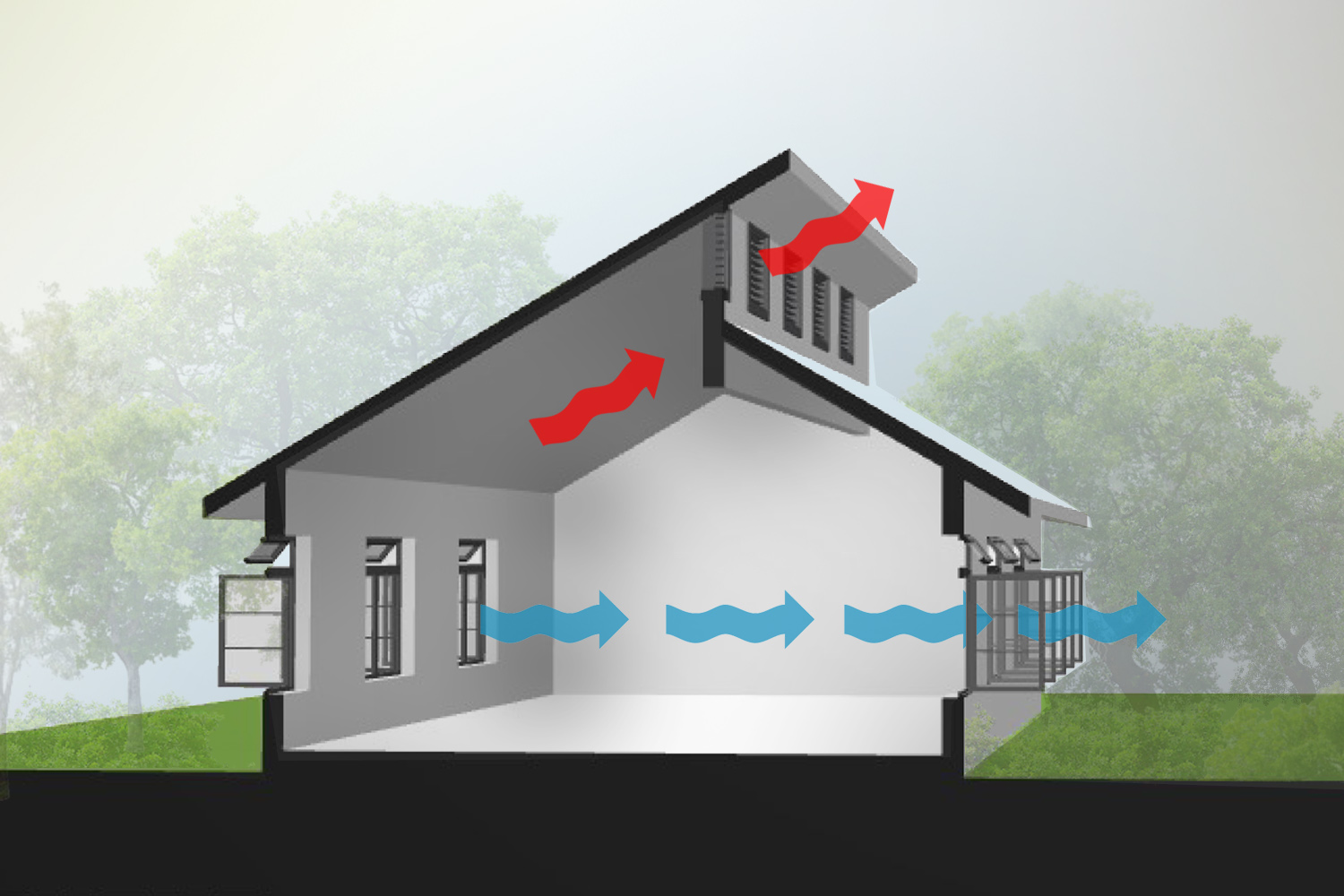Understanding the Importance of Home Air Flow for a Healthier Living Setting
Home ventilation plays a crucial function in keeping a healthy and balanced living setting. It assists in the exchange of indoor and exterior air, which is very important for improving air quality. Without proper ventilation, homes can end up being reproducing grounds for irritants and toxins. The repercussions of inadequate air flow can be considerable. This brings up the query of how house owners can effectively carry out air flow approaches to guard their health and wellness and wellness. Understanding these methods is important.

The Fundamentals of Home Air Flow
Home air flow functions as a crucial element of interior air high quality and convenience. It entails the process of exchanging stagnant indoor air with fresh outside air, thereby minimizing moisture and managing temperature level. Proper air flow systems can include natural methods, such as open windows and vents, in addition to mechanical systems, such as exhaust fans and air exchangers. Efficient home air flow helps stop problems like indoor mold and mildew growth and the build-up of damaging bits. It also boosts overall power efficiency, as well-ventilated spaces can preserve comfortable temperature levels with much less dependence on heating and cooling systems. Comprehending the essentials of home ventilation is vital for property owners looking for to produce a healthier living environment for themselves and their families.

Common Sources of Indoor Air Air Pollution

Although lots of might not recognize it, interior air contamination can originate from various resources within a family. Typical factors consist of unpredictable organic compounds (VOCs) discharged from paints, solvents, and cleansing items. Family home appliances, such as gas ranges and fireplaces, can launch dangerous gases like carbon monoxide and nitrogen dioxide. In addition, mold and mold grow in damp locations, launching spores that impact air top quality. Pet dog dander, dirt termites, and plant pollen can accumulate inside your home, additional worsening pollution levels. Smoking indoors generates harmful chemicals that remain in the air. Building materials, consisting of asbestos and formaldehyde, can off-gas dangerous materials. Identifying these resources is crucial for preserving a much healthier interior setting and promoting effective ventilation methods.
Wellness Impacts of Poor Air Flow
Indoor air pollution can have significant health and wellness effects, especially when air flow is insufficient. Poor air flow can result in the build-up of harmful pollutants, such as unpredictable natural compounds, mold, and particulate matter. This build-up might lead to respiratory system issues, including asthma, allergies, and chronic obstructive pulmonary disease. People might experience signs and symptoms like migraines, exhaustion, and irritability of the eyes, nose, and throat. Prone populaces, such as kids and the elderly, are at greater threat for extreme health impacts. Long-term direct exposure to improperly ventilated environments can additionally add to much more severe conditions, including heart diseases. As a result, making sure correct ventilation is vital for preserving a healthy and balanced living environment and decreasing the danger of health and wellness issues connected with interior air contamination.
Efficient Air Flow Approaches for Your Home
Proper air flow is important for keeping a healthy indoor environment, and executing efficient approaches can considerably boost air quality. Homeowners can begin by ensuring that exhaust followers are mounted in bathrooms and cooking areas to remove excess dampness and smells. Opening up windows on a regular basis enables fresh air to circulate, especially throughout mild weather condition. Furthermore, making use of air purifiers with HEPA filters can help record air-borne toxins. For homes with heating and cooling systems, maintaining HVAC systems and changing filters on a regular basis is vital for peak performance. Including all-natural ventilation strategies, such as cross-ventilation, can also improve air movement. Finally, sealing any kind of leaks in windows and doors prevents unwanted drafts, which can interfere with regulated air flow, eventually leading to boosted indoor air top quality and comfort.
Maintaining Ideal Air Quality Year-Round
To keep optimal air high quality year-round, home owners should embrace a proactive strategy to handling their indoor environment. Regularly keeping track of read the full info here interior air high quality is critical; this consists of monitoring for toxins such as dirt, mold and mildew, and volatile natural substances (VOCs) Implementing effective ventilation systems, such as exhaust followers and air cleansers, can considerably minimize air-borne contaminants. In addition, regular upkeep of heating and cooling systems assurances peak performance and air blood circulation. Home owners must also consider humidity degrees, as excessive moisture can bring about mold development. Seasonal changes may require adjustments in air flow approaches to accommodate differing outside air top quality. By prioritizing these practices, house owners can produce a much healthier space, advertising overall this link health for all residents throughout the year.
Frequently Asked Concerns
How Can I Tell if My Home Demands Much Better Ventilation?
To identify if a home needs far better air flow, one need to observe indicators such as persistent humidity, mold and mildew growth, stuffy smells, condensation on windows, or enhanced allergy signs, indicating poor air flow and potentially poor indoor air quality.
What Are the Signs of Poor Indoor Air High Quality?

Can Houseplants Improve Indoor Air Top Quality Properly?
The efficiency of houseplants in boosting indoor air quality is debated. While some studies recommend they can absorb toxins and generate oxygen, their total impact might be minimal compared to appropriate air flow and air filtering systems.
How Frequently Should I Modification My Air Filters?
The frequency of air filter modifications commonly relies on usage and filter kind. Generally, it is advised to replace filters every three months, though families with allergies or animals may call for more frequent adjustments for perfect efficiency.
Exist Any Particular Ventilation Solutions for Allergic Reaction Sufferers?
Many ventilation systems, such as HEPA-filtered systems, successfully reduce allergens in the air. Home Ventilation Melbourne. These systems catch dirt, animal, and pollen dander, giving allergic reaction victims with a cleaner, much healthier indoor environment while handling air quality properly
It promotes the exchange of outdoor and interior air, which is vital for enhancing air high quality. Home ventilation offers as a vital element of interior air top quality and convenience. It includes the procedure of trading stale indoor air with fresh outdoor air, thus minimizing humidity and regulating temperature level. Interior air pollution can have considerable health effects, specifically when Click Here ventilation is insufficient. Proper air flow is crucial for preserving a healthy and balanced interior atmosphere, and carrying out efficient techniques can considerably improve air quality.